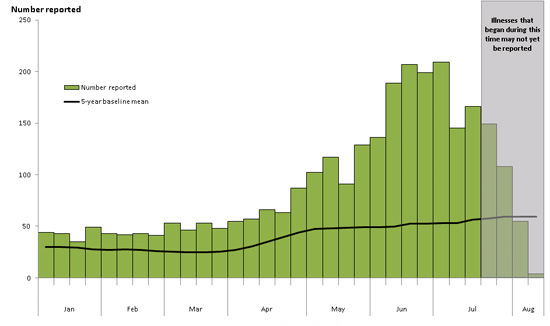Fish fight: FDA to hear comments on GM salmon
The FDA has scheduled meetings September 19-21 to hear advice about whether the agency should approve GM (genetically modified) salmon.
These, you may recall are Atlantic salmon bioengineered by AquaBounty Technologies. Atlantic salmon only grow for a few months per year; they do not produce growth hormone in non-growth months. AquaBounty scientists combined growth hormone genes from an unrelated Pacific salmon with DNA from the anti-freeze genes of an eelpout fish.
The result is that the GM salmon produce growth hormone throughout the year and grow at twice the rate of non-GM salmon.
In preparation for these hearings, a coalition of 31 advocacy groups issued a statement urging the FDA not to approve the fish.
Each year millions of farmed salmon escape from open-water net pens, outcompeting wild populations for resources and straining ecosystems…We believe any approval of GE salmon would represent a serious threat to the survival of native salmon populations, many of which have already suffered severe declines related to salmon farms and other man-made impacts….FDA’s decision to go ahead with this approval process is misguided and dangerous, and is made worse by its complete lack of data to review…FDA has been sitting on this application for 10 years and yet it has chosen not to disclose any data about its decision until just a few days before the public meeting.
According to press accounts, salmon are only the first in a long line of potential GM fish and animals. AquaBounty also raises GM trout and tilapia. Other companies are working on GM pigs and cows.
AquaBounty lost no time in responding to the Coalition’s objections:
This press release is inaccurate, deliberately misleading, and intended to create fear and misunderstanding. AquAdvantage salmon are, quite literally, the most studied fish in the world. In addition, the U.S. Food and Drug Administration has spent the last fifteen years creating a robust regulatory process to ensure these fish and other transgenic animal applications are appropriately evaluated and regulated.
Comment: In the early 1990s, I was one of four consumer representatives on the FDA’s 30-member Food Advisory Committee. This was the time when the FDA was considering approval of the first GM crops. All four of us voted to delay the decision until more information became available or to make sure that GM foods were labeled as such. Obviously, the FDA did not listen to our excellent advice.
Indeed, when our term on the committee was up, the head of the FDA’s Center for Food Safety and Applied Nutrition explained to us that our committee had not really been advisory. The FDA had already decided the issues that it brought to the committee for discussion. All the agency wanted from the committee was some indication of the kind of public reaction its decisions might raise.
Is this still the case with FDA advisory hearings? I really don’t know, but I hope the FDA will listen carefully to concerns about these fish.



